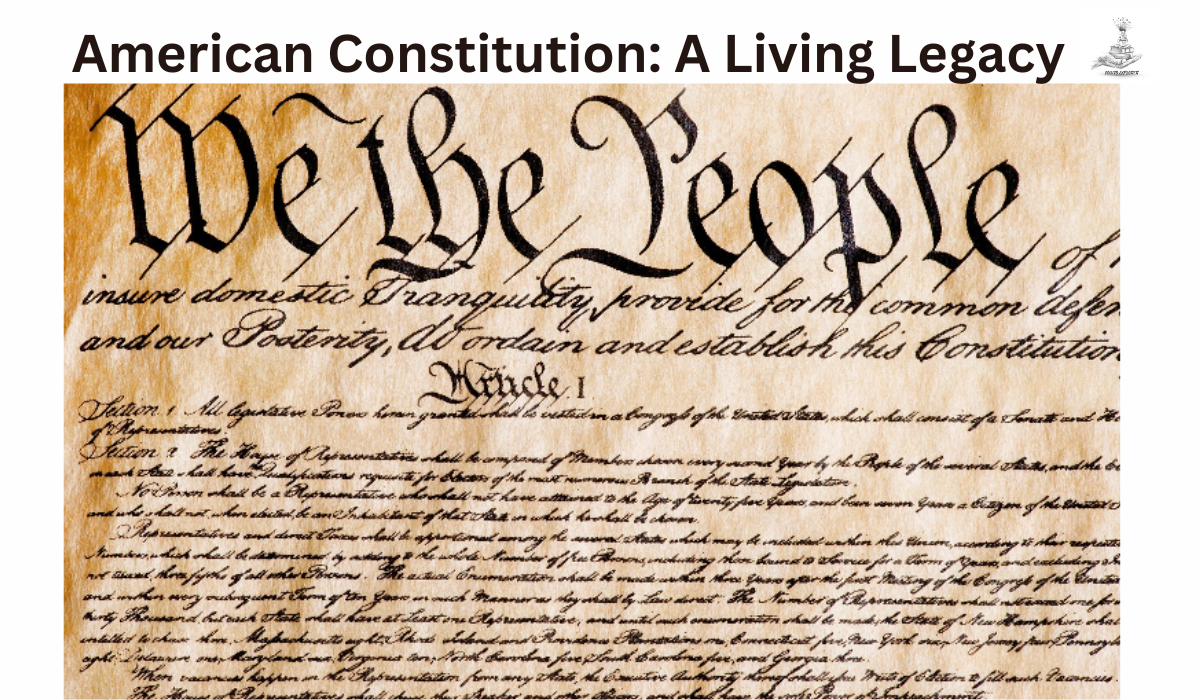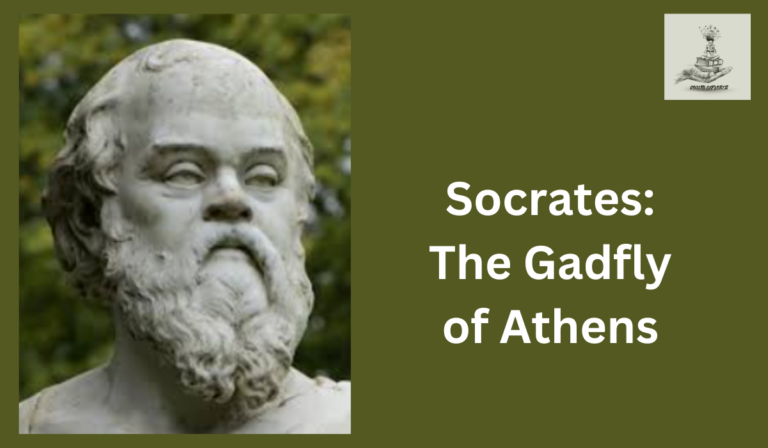American Constitution: A Living Legacy
The American Constitution reflects what the concept of republic is all about, at least on paper it is as debarring to crime as it embraces individual freedom and justice. As a cornerstone of the nation’s governance, it holds a unique place in world history. It stands as a foundational document that has shaped the course of the United States since its inception. With its rich history, diverse amendments, and enduring principles, the Constitution reflects the vision of the Founding Fathers and continues to play a pivotal role in American governance. This document lays out the fundamental principles that guide the United States to this day. In this article, we delve into the intricacies of the American Constitution, exploring its origins, structure, and profound impact on the nation’s history and governance.

Influential figures including the likes of George Washington, James Madison, Alexander Hamilton, Thomas Jefferson, and others in the late 18th century, gathered in Philadelphia to draft the Constitution, which established the principles and structure of the American government. They aimed to create a system that balanced power between the federal government and the states, with checks and balances to prevent any one branch from becoming too powerful. The Constitution remains a crucial document shaping the United States to this day.
Structure of the Constitution
Overview of the Preamble
The Preamble serves as the opening statement of the Constitution, outlining the goals of the document. It succinctly captures the aspirations of “We the People” and sets the stage for the subsequent articles and amendments.
Breakdown of Articles and Amendments
The Constitution consists of seven articles, each addressing specific aspects of government structure and function. Amendments, including the Bill of Rights, further refine and expand upon the original text.
American Bill of Rights: The first ten amendments
The Bill of Rights, comprising the first ten amendments, safeguards individual freedoms and limits the powers of the federal government. These amendments address crucial issues such as freedom of speech, religion, and the right to bear arms. It has been a touchstone for debates on civil liberties. Its profound impact is evident in landmark legal cases that have shaped the interpretation and application of these fundamental rights. Some of these cases are listed below:
Marbury v. Madison (1803):
Issue: Established the principle of judicial review, giving the Supreme Court the power to interpret the Constitution and declare laws unconstitutional.
Impact: Strengthened the judiciary’s role in checking the constitutionality of government actions.
Brown v. Board of Education (1954):
Issue: Declared state laws establishing separate public schools for black and white students to be unconstitutional, overturning the “separate but equal” doctrine.
Impact: Marked a pivotal moment in the civil rights movement, challenging segregation and influencing future decisions on equal protection under the law.
Roe v. Wade (1973):
Issue: Established a woman’s legal right to have an abortion, recognizing a constitutional right to privacy.
Impact: Shaped reproductive rights, setting a precedent for the Court’s protection of individual liberties.
United States v. Nixon (1974):
Issue: Ordered President Nixon to turn over the Watergate tapes, affirming the principle that executive privilege is not absolute.
Impact: Reinforced the idea that no one, including the president, is above the law, maintaining the system of checks and balances.
Bush v. Gore (2000):
Issue: Decided the disputed 2000 presidential election, halting a recount in Florida.
Impact: Highlighted the importance of fair election processes and raised questions about the Court’s role in politically charged matters.
Historical American Constitutional Amendments and their impact
- First Amendment (1791): Protects freedom of speech, religion, press, assembly, and the right to petition the government.
- Second Amendment (1791): Ensures the right to bear arms, allowing individuals to own and carry firearms.
- Third Amendment (1791): Prohibits the quartering of soldiers in private homes during peacetime without the owner’s consent.
- Fourth Amendment (1791): Protects against unreasonable searches and seizures, requiring warrants based on probable cause.
- Fifth Amendment (1791): Guarantees various rights, including the right to remain silent, protection against double jeopardy, and the right to due process of law.
- Sixth Amendment (1791): Ensures the right to a fair and speedy trial, including the right to legal counsel and the right to confront witnesses.
- Seventh Amendment (1791): Provides the right to a jury trial in certain civil cases.
- Eighth Amendment (1791): Prohibits cruel and unusual punishment, as well as excessive bail or fines.
- Ninth Amendment (1791): States that the enumeration of certain rights in the constitution does not deny or disparage other rights retained by the people.
- Tenth Amendment (1791): Reserves powers not delegated to the federal government to the states or the people.
- Eleventh Amendment (1795): Limits lawsuits against states by citizens of other states or foreign countries.
- Twelfth Amendment (1804): Changes the method of electing the president and vice president, separating their ballots in the electoral college.
- Thirteenth Amendment (1865): Abolishes slavery in the United States.
- Fourteenth Amendment (1868): Defines citizenship, guarantees equal protection under the law, and ensures due process for all citizens.
- Fifteenth Amendment (1870): Prohibits the denial of the right to vote based on race, color, or previous servitude.
- Sixteenth Amendment (1913): Grants Congress the power to levy income taxes.
- Seventeenth Amendment (1913): Establishes the direct election of U.S. Senators by the people of each state.
- Eighteenth Amendment (1919): Prohibits the manufacture, sale, and transportation of alcoholic beverages (later repealed by the 21st Amendment).
- Nineteenth Amendment (1920): Grants women the right to vote.
- Twentieth Amendment (1933): Sets the terms of the president and Congress, ensuring a smoother transition of power.
- Twenty-First Amendment (1933): Repeals the Eighteenth Amendment, ending Prohibition.
- Twenty-Second Amendment (1951): Limits the president to two terms in office.
- Twenty-Third Amendment (1961): Grants residents of Washington, D.C., the right to vote in presidential elections.
- Twenty-Fourth Amendment (1964): Prohibits the imposition of poll taxes as a condition for voting.
- Twenty-Fifth Amendment (1967): Establishes procedures for presidential succession and the replacement of a vice president.
- Twenty-Sixth Amendment (1971): Lowers the voting age to 18.
- Twenty-Seventh Amendment (1992): Delays laws affecting Congressional salary from taking effect until after the next election.
Ongoing debates surround potential amendments, reflecting the ever-changing nature of society. Issues like campaign finance reform, voting rights, and the Electoral College prompt discussions about the need for constitutional changes.
Checks and Balances: The separation of powers
The separation of powers in the U.S. Constitution refers to the division of governmental responsibilities among three branches: the Executive (headed by the President), the Legislative (Congress, consisting of the Senate and the House of Representatives), and the Judicial (the federal courts). This separation is designed to prevent the abuse of power by any one branch and to ensure a system of checks and balances. Each branch has its distinct powers and responsibilities, and they are meant to work independently while also keeping an eye on each other to maintain a fair and effective government.
Federalism: Division of powers
Federalism, a cornerstone of the Constitution, delineates powers between the federal government and individual states. This division allows for localized governance and fosters a balance between national unity and state autonomy. The relationship between the federal government and states has evolved over time, with pivotal moments like the Civil War and the Civil Rights Movement influencing the balance of power.
Constitution’s Influences: The Landmarks
The American founders drew heavily from the British constitutional tradition, incorporating concepts such as the rule of law, separation of powers, and representative government. The Magna Carta (1215) and the English Bill of Rights (1689) are notable documents that influenced the development of the American Constitution. Thinkers like John Locke, Montesquieu, and Rousseau provided intellectual foundations for the American Constitution. Locke’s ideas on natural rights, Montesquieu’s concept of separation of powers, and Rousseau’s social contract theory influenced the framers in shaping the principles of the Constitution.
Classical Republicanism: The idea of civic virtue and the common good, derived from classical republicanism. This is evident in the emphasis on public service and the establishment of a government designed to promote the general welfare. Although the United States incorporated elements of classical liberalism as well.
Iroquois Confederacy: Some scholars argue that the structure of the Iroquois Confederacy, a Native American political union, influenced the development of the federal system and the concept of a league of sovereign states within the U.S. Constitution.
European Legal Systems: Concepts from European legal systems, such as habeas corpus and the right to a fair trial, found their way into the U.S. Constitution. These principles are evident in the Constitution’s provisions related to due process and the protection of individual rights.
Global Events and Revolutions: The American Revolution itself, along with other global movements for independence, played a role in shaping the U.S. Constitution. The desire for self-determination and protection against arbitrary rule were shared sentiments among nations during this period.
International Treaties and Agreements: Over time, the U.S. has been influenced by international treaties and agreements, such as the United Nations Charter. While not directly incorporated into the Constitution, these agreements impact the country’s approach to global governance and the recognition of international law.
Global Influences: A Guiding Light
The American Constitution has also influenced constitutional developments worldwide serving as a model for many countries and contributing to the development of international norms. Democracies and constitutional governments in other nations often draw inspiration from the principles embedded in the U.S. Constitution. Here are some examples in which the American Constitution has influenced global governance.
Written Constitution and Rule of Law:
The U.S. Constitution is one of the earliest examples of a written constitution, emphasizing the rule of law and the establishment of a framework for government. Many countries around the world have adopted written constitutions as a means of codifying their fundamental laws. For example, Japan’s post-World War II constitution drew inspiration from the U.S. Constitution in terms of establishing democratic principles and protecting individual rights.
Separation of Powers:
The U.S. Constitution delineates the powers of the legislative, executive, and judicial branches, promoting a system of checks and balances. Numerous countries have incorporated the idea of separation of powers into their governance structures. For instance, Germany, India, and South Africa have constitutions that reflect a separation of powers model, influenced partly by the U.S. Constitution.
Protection of Individual Rights:
The Bill of Rights, the first ten amendments to the U.S. Constitution, outlines fundamental rights and liberties of individuals. Many countries have adopted similar provisions in their constitutions or legal frameworks to safeguard individual rights. The Canadian Charter of Rights and Freedoms, for instance, was influenced by the U.S. Bill of Rights.
Federalism:
The U.S. Constitution establishes a federal system, dividing powers between the national and state governments. Countries like Canada, Australia, and India have embraced federal systems in their governance structures, inspired by the U.S. federal model.
Popular Sovereignty:
The U.S. Constitution begins with the phrase “We the People,” emphasizing the principle of popular sovereignty. Democracies worldwide often incorporate the concept of popular sovereignty, where the authority of the government is derived from the people. For instance, the preamble of the Constitution of India reflects a commitment to the idea of “We the People.”
Influence on Post-War Constitutions:
The U.S. played a role in shaping post-World War II constitutions, particularly in Japan and Germany. The new constitutions of Japan and Germany after World War II incorporated democratic principles, individual rights, and a commitment to peace, influenced by the U.S. Constitution.
International Human Rights Standards:
The U.S. Constitution, with its emphasis on individual liberties, has contributed to the development of international human rights norms. The Universal Declaration of Human Rights and subsequent international human rights treaties draw on principles found in the U.S. Constitution, reflecting a global recognition of fundamental human rights.
While the influence of the U.S. Constitution on global governance is evident, it’s important to note that each country adapts these principles to suit its unique historical, cultural, and political context. Additionally, the global landscape is shaped by a multitude of influences beyond the U.S. Constitution.
Future of the American Constitution
The future holds potential for additional amendments that address emerging issues, ensuring the Constitution remains a living document responsive to societal needs. Adapting to the evolving needs of society is crucial for the Constitution’s continued relevance. Balancing tradition with progress ensures the document’s enduring impact. Civic education plays a crucial role in ensuring citizens understand the Constitution’s principles and their rights. An informed populace is essential for the preservation of democratic values. Efforts to enhance constitutional literacy, from school curricula to public awareness campaigns, contribute to a more engaged and informed citizenry. Educational initiatives empower individuals to participate in the democratic process actively.
Public Perception and Misconceptions
Misconceptions surrounding the Constitution, such as the notion of a “living document” or misinterpretations of individual amendments, underscore the importance of public education on constitutional matters. Clearing up misunderstandings and providing accurate information fosters a more informed public discourse on constitutional issues. This clarity is essential for meaningful civic engagement.
Conclusion
In conclusion, the American Constitution, a living legacy, continues to embody the timeless principles crafted by the Founding Fathers. Its adaptability remains a crucial asset, ensuring relevance in our ever-evolving world. The wisdom of those who drafted it echoes through the ages, providing a resilient foundation for the nation. In the face of challenges, the Constitution stands as a guiding force, shaping the destiny of a diverse and modern society. As we reflect on its enduring impact, we recognize its vital role in upholding democratic ideals for generations to come.
FAQs
What is the significance of the Bill of Rights?
The Bill of Rights safeguards individual freedoms and limits government power, serving as a cornerstone of constitutional protections.
How has the Constitution adapted to societal changes?
Through amendments and legal interpretations, the Constitution has evolved to address emerging issues and reflect societal progress.
What is the role of the Supreme Court in constitutional interpretation?
The Supreme Court plays a vital role in interpreting the Constitution, setting precedents that shape legal and societal norms.
Why is civic education important in understanding the Constitution?
Civic education empowers citizens to understand their rights and actively participate in the democratic process, fostering informed engagement.
What challenges does the Constitution face in the 21st century?
Ongoing debates on issues like privacy rights, executive power, and constitutional interpretation present challenges to the enduring principles of the Constitution.







